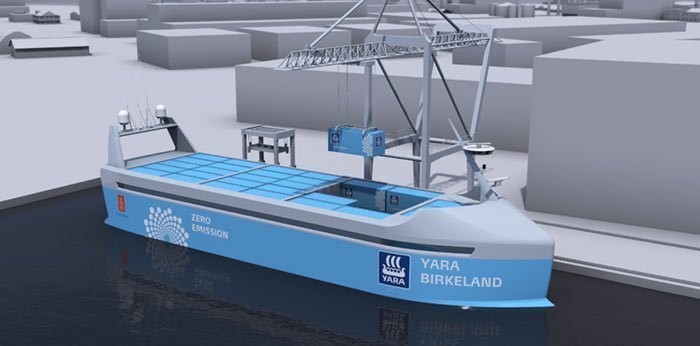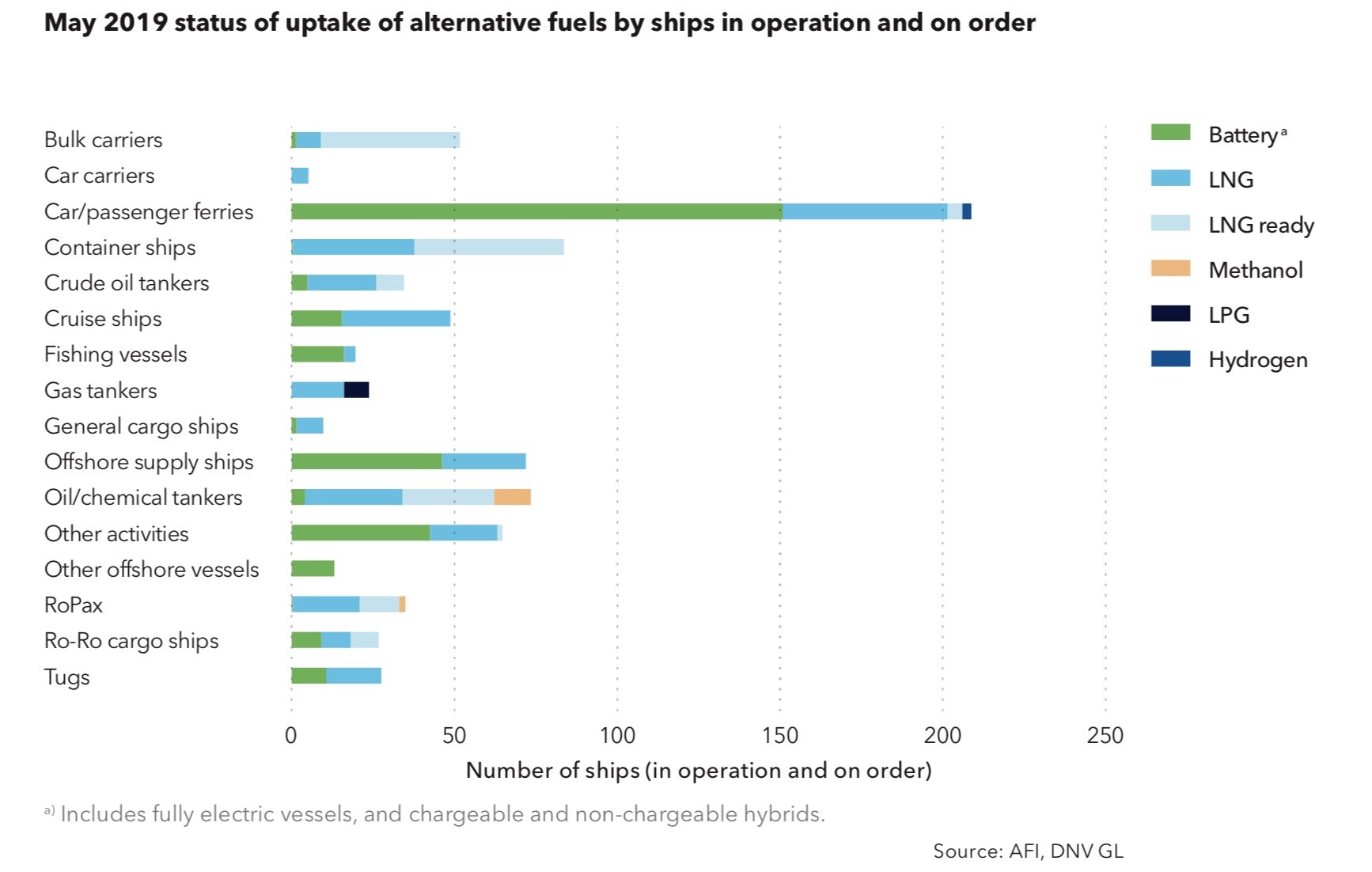Batteries now in use across almost every shipping segment

An updated maritime forecast through to 2050 from class society DNV GL published yesterday predicts that LNG will be the world’s top marine fuel by the middle of the decade, with the use of ammonia climbing the ranks fast too.
DNV GL has long trumpeted LNG as the dominant fuel of the future, but in the 118-page report it discussed a range of other fuel possibilities, both as bridging fuels and permanent fossil fuel replacements.
Among the data carried on the existing fleet, including newbuilds, one chart (see below) stood out in the forecast. DNV GL charted the global fleet – including newbuilds – that have adopted alternative fuels as of May this year.
While LNG or LNG-ready ships top this chart, coming in at second place are battery-assisted vessels, which are now being installed on almost every single segment of the global merchant fleet. Battery-powered ships include fully electric vessels, and chargeable and non-chargeable hybrids. The take-up has been strongest in the ferry sector followed by OSVs to date.
Commenting on the growth of battery use in shipping, Greg Atkinson from Japan’s Eco Marine Power commented: “The use of a variety of battery technologies is likely to become more widespread across shipping especially as some ship types move towards using electrical propulsion. We are also likely to see technologies specifically developed for land-based electric vehicles including solid-state batteries being adapted for ship use also.”
Dr Tristan Smith from London’s ECL Energy Institute also commended the move towards battery use, telling Splash: “This is encouraging because it opens up future potential for more flexible and integrated power systems that can integrate with future alternative fuels and machinery. It also shows how adaptable and innovative the shipping industry is – such bespoke design and rapid take-up would be hard to imagine in a sector like aviation.”
Di Gilpin from the Smart Green Shipping Alliance, warned that batteries when viewed from an entire life cycle point of view are not an answer to shipping’s decarbonisation quest.
“Batteries, energy storage, are useful for smoothing intermittent energy supplies from primary renewable energies. But I worry about the whole life cycle – what scarce materials might be embedded in them? Where does the power come from? We need to think about whole life cycle,” Gilpin said.
Writing the foreword to the 2050 maritime forecast, Knut Ørbeck-Nilssen, CEO of DNV GL – Maritime, noted: “Fuel flexibility is one of the keys to meeting the decarbonisation challenge, as the fuels of today may not be the fuels of tomorrow. Having a picture of the entire fuel ecosystem is vital, as owners, operators, and the industry itself will find it much tougher to adapt to a low-carbon future if they are locked into a single choice. This also applies to storage and onboard tanks, and even to port infrastructure.”
The full report can be accessed here.

